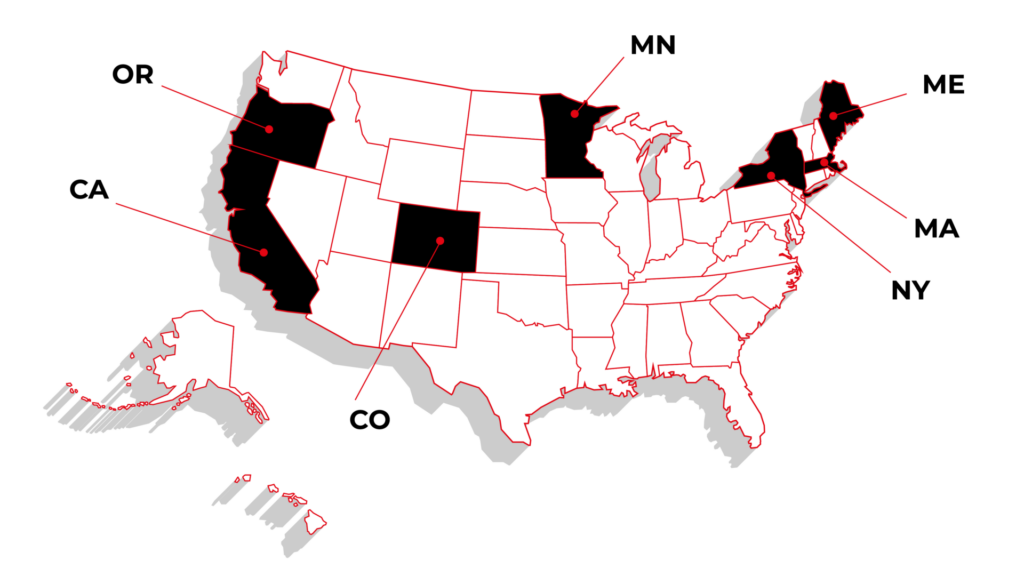REPAIR Act and State Laws: What Automotive OEMs Must Prepare For

Right to Repair is becoming a key issue in the U.S., with the REPAIR Act (H.R. 906) at the center. This proposed federal law would require OEMs to give vehicle owners and independent repair shops access to vehicle-generated data and critical repair tools.
The goal? Protect consumer choice and promote fair competition in the automotive repair market, preventing manufacturers from monopolizing repairs.
For OEMs, it means growing pressure to open up data and tools that were once tightly controlled. The Act could fundamentally change how repairs are managed, forcing companies to rethink their business models to avoid risks and stay competitive.
We’ll walk you through the REPAIR Act’s key provisions and practical steps automotive OEMs can take to adapt early and avoid compliance risks.
What’s inside the REPAIR Act (H.R. 906)
The REPAIR Act (H.R. 906), also known as the Right to Equitable and Professional Auto Industry Repair Act, aims to give consumers and independent repair shops access to vehicle data, tools, and parts that are crucial for repairs and maintenance.
Its goal is to level the playing field between manufacturers and independent repairers while protecting consumer choice. This could mean significant changes in how OEMs manage vehicle data and repair services.
REPAIR Act timeline – where are we now
The REPAIR Act (H.R. 906) was introduced in February 2023 and forwarded to the full committee in November 2023.
As of January 3, 2025, the bill has not moved beyond the full committee stage and was marked “dead” because the 118th Congress ended before its passage. But the message remains clear – Right to Repair isn’t going away. The growing momentum behind repair access and data rights is reshaping the conversation.
REPAIR Act provisions
Which obligations for manufacturers are covered by the Repair Act?
1) Access to vehicle-generated data
- Direct data access: OEMs would be required to provide vehicle owners and their repairers with real-time, wireless access to vehicle-generated data. This includes diagnostics, service, and operational data.
- Standardized access platform: OEMs must develop a common platform for accessing telematics data to provide consistent and easy access across all vehicle models.
2) Standardized repair information and tools
- Fair access: Critical repair manuals, tools, software, and other resources must be made available to consumers and independent repair shops at fair and reasonable costs.
- No barriers: OEMs cannot restrict access to essential repair information. The aim is to prevent them from monopolizing repair services.
3) Ban on OEM part restrictions
- Aftermarket options: The Act prohibits manufacturers from requiring the use of OEM parts for non-warranty repairs. Consumers can choose aftermarket parts and independent service providers.
- Fair competition: This provision supports competition by allowing aftermarket parts manufacturers to offer compatible alternatives without interference.
4) Cybersecurity and data protection
- Security standards: The National Highway Traffic Safety Administration (NHTSA) will set standards to balance data access with cybersecurity.
- Safe access: OEMs can apply cryptographic protections for telematics systems and over-the-air (OTA) updates, provided they do not block legal access to data for independent repairers and vehicle owners.]
These provisions go beyond theory and will directly affect how OEMs handle repairs and manage data access. Even more challenging? The existing patchwork of state laws that already demand similar access makes compliance tricky.
Complex regulatory landscape: How Right to Repair influences automotive OEMs
The regulatory environment for the Right to Repair in the U.S. is becoming increasingly complex, with state-level laws already in effect and a potential nationwide federal law still pending. This evolving framework presents both immediate and long-term challenges for automotive OEMs, requiring them to navigate overlapping requirements and conflicting standards.
State-level laws: A growing patchwork
As of February 2025, several states have enacted comprehensive Right to Repair laws.

Massachusetts and Maine have laws explicitly targeting automotive manufacturers. (Automakers have sued to block the law’s implementation in Maine.)
These regulations require manufacturers to provide vehicle owners and independent repairers with access to diagnostic and repair information, as well as a standardized telematics platform.
Other states like California, Minnesota, New York, Colorado, and Oregon have focused on consumer electronics or agricultural equipment without directly impacting automotive OEMs.
However, the broader push for repair rights means automotive manufacturers cannot ignore the implications of this trend.
Additionally, as of early 2025, 20 states had active Right to Repair legislation, reflecting the momentum behind this movement. While most of these bills remain under consideration, they highlight the growing pressure for more open access to repair information and vehicle data.
Federal vs. state regulations: Compliance challenges
The pending federal REPAIR Act (H.R. 906) aims to create a unified national framework for the Right to Repair, focusing on vehicle-generated data and repair tools. However, until it becomes law, OEMs must comply with varying state laws that could contradict or go beyond future federal requirements.
Key scenarios:
- If the REPAIR Act includes a preemption clause, federal law will override conflicting state laws, providing a single set of rules for OEMs.
- If preemption is not included, OEMs will face a dual compliance burden, adhering to both federal and state-specific requirements.
This uncertainty complicates planning and increases the risk of non-compliance, making it essential for OEMs to prepare now.
Global pressures: The EU’s Right to Repair mandates
The U.S. isn’t the only region focusing on the Right to Repair. European Union regulations are setting global standards for OEMs selling internationally.
- European Court of Justice Ruling (October 2023): Automotive manufacturers cannot limit repair data access under cybersecurity claims, expanding rights for independent repairers.
- EU Data Act (September 12, 2025): Requires OEMs to provide third-party access to vehicle-generated data, making open data compliance mandatory for the EU market.
For OEMs operating internationally, aligning early with these standards is a smart move. While the 2024 Right to Repair Directive doesn’t directly target vehicles, it reflects the broader trend toward increased data access and repairability.
How automotive OEMs should prepare for the Right to Repair (Even without a federal law)
Waiting is risky. Regardless of whether the REPAIR Act becomes law, preparation is key. Waiting for final outcomes could lead to costly adjustments and missed opportunities. Here’s where to start:
1. Develop a standardized vehicle data access platform
Why: Regulations require open and transparent data-sharing for diagnostics and updates. Without a standardized platform, compliance becomes difficult.
How: Focus on building a secure platform that gives vehicle owners and independent repair shops transparent access to the necessary data.
2. Provide open access to repair information and tools
Why: Some states already require OEMs to provide critical repair information and tools at fair prices. This trend is likely to expand.
How: Start creating a centralized repository for repair manuals, diagnostic tools, and other key resources.
3. Strengthen cybersecurity without restricting repair access
Why: Protecting data is critical, but legitimate repairers need safe entry points for service.
How: Develop security protocols that protect key vehicle functions without blocking legitimate access. This means securing software updates and repair-related data while allowing repairers safe entry points for diagnostics and service.
4. Improve OTA software update capabilities
Why: Having strong OTA capabilities helps comply with future regulations requiring real-time access and updates.
How: Upgrade your current OTA systems to allow secure updates and diagnostics. Include tools authorized third parties can use for updates and software repairs.
5. Transition to modular and repairable product design
Why: Designing products for easier repair reduces costs and improves compliance.
How: Shift toward using modular components that can be replaced individually. Avoid locking parts to specific manufacturers, as some states have banned this practice. Modular designs also support longer spare part availability, which many laws will require.
6. Align supply chain and warranty systems with Right-to-Repair laws
Why: Warranty terms and parts availability are common regulatory targets.
How: Make spare parts available for several years after the sale of a vehicle. Update warranty policies to allow third-party repairs and non-OEM parts without penalty.
7. Monitor regulations and adapt quickly
Why: The regulatory landscape is evolving rapidly. Staying informed about new laws and adjusting plans early will help avoid costly last-minute changes.
How: Track new laws and build flexible systems that can easily adjust as regulations change.
How an IT enabler helps OEMs prepare for Right to Repair
Managing compliance can feel overwhelming, but it doesn’t have to disrupt operations. An IT enabler helps manufacturers build systems and processes that meet regulatory demands without adding unnecessary complexity.
Here’s how:
Turning regulations into practical solutions
Right to Repair regulations vary across states and countries. An IT enabler translates these requirements into practical tools – systems for managing access to repair data, diagnostics, and tools – to make compliance more manageable.
Building the right technology
OEMs need reliable platforms that allow repairers to access diagnostic data and tools while keeping vehicle systems secure. IT experts develop scalable solutions that work across different models and markets without compromising safety.
Balancing security and access
Access to repair data must be balanced with strong security. IT solutions help protect sensitive vehicle functions while providing authorized repairers with the necessary information.
Keeping operations simple
Compliance shouldn’t add complexity. Automating key processes and streamlining workflows lets internal teams focus on core operations rather than administrative tasks.
Long-term support
Laws and standards evolve. IT partners provide continuous updates and maintenance to keep systems aligned with the latest regulations, reducing the risk of falling behind.
Delivering custom solutions
Every manufacturer has unique needs. Whether it’s updating your warranty system for third-party repairs, improving OTA update capabilities, or adapting your supply chain for spare part availability, custom solutions help you stay compliant and competitive.
At Grape Up, we help OEMs adapt to Right to Repair regulations with practical solutions and long-term support.
We have experience working with automotive, insurance, and financial enterprises, building systems that account for differences in regulations across various states.
Preparing for changes? Contact us today.
From secure diagnostics to repair information management, we provide the expertise and tools to help you stay compliant and ready for what’s next.
Check related articles
Read our blog and stay informed about the industry's latest trends and solutions.
see all articles






